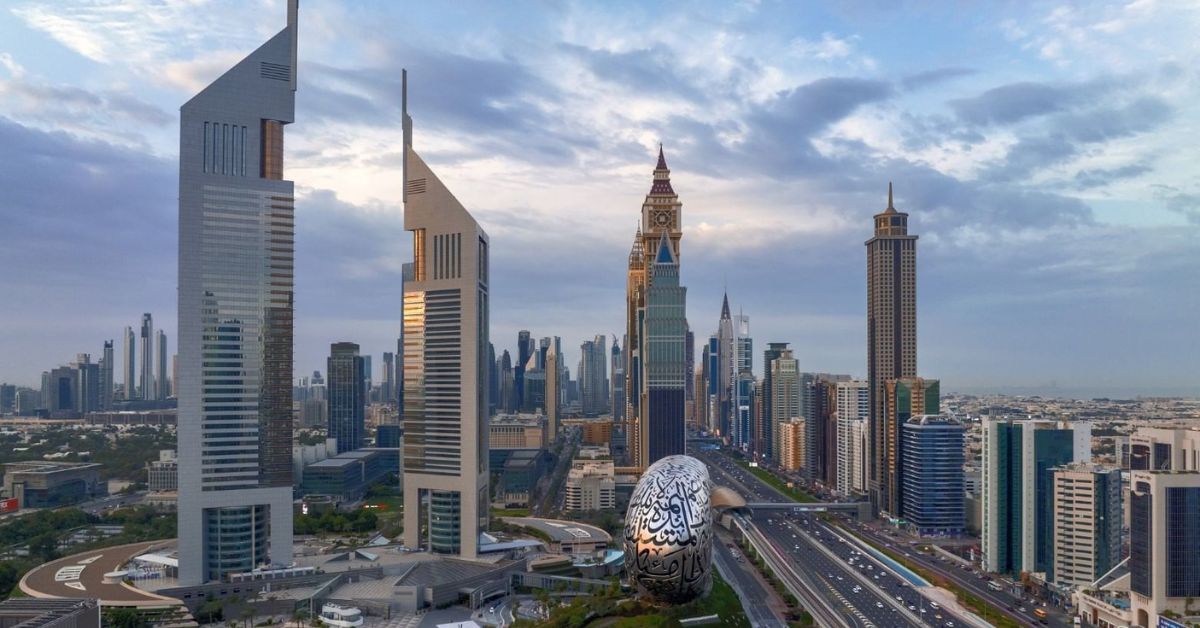DUBAI — The real estate sector in the GCC countries has long been a focal point for investors and stakeholders, given the region’s strategic location, economic stability, and ambitious development projects.
In 2024, the landscape of the GCC real estate market is poised for a blend of challenges and opportunities shaped by evolving global dynamics, technological advancements, and local policy shifts. However, the question on everyone’s mind is: what lies ahead for this dynamic landscape? Will prices rise or decrease, particularly in the UAE and Saudi Arabia?
According to a recent report by S&P Global Ratings, UAE residential real estate developers benefit from robust demand. Dubai is particularly strong, defying global trends and remaining relatively immune to high interest rates, inflation, and uncertainty around the fallout from geopolitical conflicts. After three years of double-digit percent growth in real estate transaction numbers, prices, and rentals, the average price has approached peak levels of 2014, increasing the risk of cyclical correction.
The report expects the prices for Dubai’s property market could start to stabilize and even decline slowly over the next 12-18 months if lingering global economic pressures undermine sentiment and demand, while a high level of new supply leads to market saturation.
At A Glance GCC Real Estate Dynamics: The real estate sector in the GCC countries remains a key focus area for investors, driven by the region's strategic position, economic stability, and ambitious development initiatives. 2024 Market Outlook: A blend of challenges and opportunities awaits the GCC real estate market in 2024, influenced by global dynamics, technological advancements, and shifts in local policies. Dubai's Resilience: Dubai's real estate market shows strong demand, with the city resisting global economic pressures better than many other regions. Potential Price Adjustments: Prices in Dubai's property market may begin to stabilize or slightly decline over the next 12-18 months due to global economic pressures and a high level of new supply. UAE's Hospitality and Retail Boom: The UAE sees significant growth in hospitality and retail, fueled by international events like COP28 and a surge in international visitors. Saudi Arabia's Real Estate Growth: Strong demand in Riyadh and Jeddah, driven by Vision 2030 projects, continues to push prices upward. Qatar's Market Correction: Post-World Cup 2022, Qatar's real estate market faces a cyclical correction, with an oversupply leading to price and rental declines.
High interest rates had a limited effect on demand in Dubai, where the majority of real estate transactions are paid in cash, and the share of mortgage transactions dropped to only 16 percent of all transactions in the first nine months of 2023. A mild slowdown is expected and developer ratings are likely to remain resilient with support from reduced leverage, accumulated cash balances, and substantial liquidity buffers.
On the other hand, the UAE’s positive traction for hospitality and retail is boosted by a high number of international visitors, population growth, and an overall supportive economic environment. Hospitality remains very strong (76 percent occupancy in the first eight months of 2023), with average daily rates (ADR) at historically high levels ($170), as the country hosts a series of global events, including COP28 in Dubai.
Moreover, the changes in corporate ownership rules allowing 100 percent foreign ownership and the active issuance of new regulations for high-tech and virtual assets companies have prompted new business establishments in the UAE. This has resulted in rising office rents and reduced vacancies (10 percent in the Central Business District) over the past few years amid relatively limited new supply.
In Saudi Arabia, strong demand for residential real estate in Riyadh and Jeddah has led to price increases. Megaprojects related to the Vision 2030 plan have significantly energized the market, and both expats and local Saudis are relocating to Riyadh, which is actively attracting businesses in its quest to become a significant regional business hub.
However, higher prices and mortgage rates are hindering demand as transaction numbers contract. The demand for residential real estate in Saudi Arabia is more sensitive to high interest rates, as demonstrated by the decline in new mortgages year to date in 2023.
According to the report, the country is nearly at its target of increasing homeownership by Saudi nationals to 70 percent by 2030. This target, along with expat population growth, will sustain demand for real estate in 2024. There is still no freehold title to real estate for foreigners in Saudi Arabia, so the real estate market is generally less volatile than in neighboring Dubai, which has a higher share of expats who can purchase freehold properties.
On the other hand, the Kingdom is on a growth path under the framework of its Vision 2030 program. Saudi authorities are taking measures to boost the tourism sector through visa reforms, hosting of high-profile events, and developing new tourism destinations. Several international hotel chains have already announced massive investments in the country.
A significant increase in hotel rooms is expected in the run-up to 2030, as the country now expects to reach its target of 100 million visitors (domestic and international) well ahead of plan.

Office landlords benefit from a substantial uptick in international corporations and government-related entities as tenants, which has led to rental increases and vacancy drops, given the limited new supply.
S&P expects such a positive dynamic to continue as economic growth in the non-oil sector is bolstered by significant investments in Vision 2030 projects. With new GLA (Gross Leasable Area) additions, the retail segment continues to expand, and mall operators are focusing on enhancing their entertainment and omnichannel options.
In Qatar, the real estate market is undergoing a cyclical correction after the boost related to the World Cup in November-December 2022. Oversupplied properties have seen price and rental declines, as more new units were delivered in 2023.
However, pressures are expected to persist for the next two to three years. The downward pressure affects all real estate subsegments, including hotels, offices, and retail.
The new capacity delivered for the World Cup in 2022, particularly in the hospitality segment, has significantly increased available inventory. On the positive side, tourism is expanding significantly, while the population has increased by about 2 percent so far in 2023, moderating the downside. We expect pressures to linger for the next two to three years.








